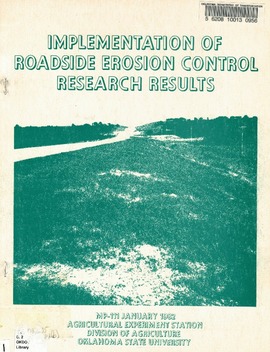| dc.description.abstract | Large scale areas were estbalished to demonstrate implementation of research findings. These included: (1) johnsongrass control, (2) willow control, (3) bindweed control, (4) broadleaf weed control, (5) sandbur control, (6) seeding Plains bluestem, and (7) planting ground covers other than grass. As a result, the use of herbicides for roadside maintenance has increased dramatically in the period 1967 to 1981. In 1976, approximately 300 acres were treated with herbicides. By 1980, the total exceeded 109,000 acres. Meanwhile mowing has been reduced substantially, from 229,729 acreas in 1976 to 157,912 acreas in 1980. Cost savings have been especially significant. Mowing costs have continued to rise each year to $11.56 per acre in 1980, while chemical costs have decreased in the past three years to $7.65 per acre in 1980, a savings of almost $4.00 per acre. The selective control of johnsongrass along Oklahoma highways can be achieved with applications of MSMA (monosodium methanearsonate), or DSMA (disodium methanearsonate). Willows less than 4 to 5 inches in diameter, can effectively be controlled during the dormant season (February-March) by a basal bark treatment of 2,4-D low volatile ester in diesel oil (ratio 1:25). Two annual applications, for 2 to 3 years, made with 1 quart of 2, 4-D low volatile ester (4 lb ai/gal) in water at 40 gpa, can eliminate 75% or more of the perennial bindweed from our roadsides. The preemergence application of Aatrex 4L, or Abatrex 0W, has provided 95 to 100% broadleaf control, and most annual grasses. Sandburs can be effectively eradicated with 2 to 3 annual applications of DSMA. The lack of precipitation during the year of establishment, resulted in very little success with Plains bluestem and Japanese honeysuckle, in producing erosion resistant ground cover. | |
